Main menu
Common skin conditions

NEWS
Join DermNet PRO
Read more
Quick links
Author: Dr Ken Hiu-Kan Ip, Dermatology Registrar, Auckland City Hospital. Technical Editor: Mary Elaine Luther, Medical Student, Ross University School of Medicine, Barbados. DermNet Editor in Chief: Adjunct A/Prof. Amanda Oakley, Dermatologist, Hamilton, New Zealand. Copy edited by Gus Mitchell. January 2020.
Introduction How it works Differences between types Age reversal Approved uses Uses Contraindications Adverse effects Other uses
Botulinum toxin is an injectable muscle relaxant, commonly known by one of its trademarked brand names, BOTOX®.
Botulinum toxin is responsible for causing botulism, the paralysing and potentially fatal foodborne illness. The name botulinum is derived from the Latin word botulus (sausage) because the illness was once believed to originate from sausages. We now know that the botulinum toxin is produced by Clostridium botulinum bacteria.
C. botulinum produces eight types of toxins, labelled from A to G. Since the 1950s, research has focused on developing the muscle-relaxing properties of botulinum-A, and more recently botulinum-B, for therapeutic use.
Botulinum-A and botulinum-B block nerve signals in the muscles. In order to contract, a muscle must receive a signal from peripheral nerve endings. This signal is the neurotransmitter, acetylcholine, which binds the receptors with the muscle, initiating muscle contraction. Botulinum toxin inhibits the release of acetylcholine and therefore also inhibits muscle contraction.
More specifically, botulinum-A and botulinum-B target a group of proteins called SNARE (soluble NSF attachment protein receptor). The function of SNARE is to release neurotransmitters from their storage vesicles by helping vesicle membranes fuse with the cell membrane. Because SNARE is also involved in the release of other neurotransmitters, botulinum toxins have additional effects. For example, by preventing the release of glutamate and substance P, botulinum toxin lessens the sensation of pain.
Muscle weakness is typically seen within two to four days, and maximal weakness or paralysis is noted around ten days. The effects of botulinum toxins are not permanent, because the affected nerves sprout new endings. After around three months, a working connection between the nerve and muscle is re-established. However, an element of atrophy (muscle wasting) occurs with each injection. This incremental atrophy explains why the interval needed for a second treatment can gradually lengthen following repeated injections.
In New Zealand, there are three commercially available brands of botulinum-A:
Each form has a unique molecular structure but shares the same core elements of the botulinum-A. The majority of research for cosmetic uses of botulinum-A have been based on onabotolinumtoxinA.
It is important to note that there is no standardised international unit that can be used to compare or to measure the amount of botulinum toxin administered. This means the effect of one unit of Botox is different than one unit of Dysport. The approximate conversion factor is 1:2.5 to 1:5 between Botox and Dysport; and 1:1 between Botox and Xeomin.
Myobloc (rimabotulinumtoxinB) is a commercially available brand of botulinum-B. Myobloc is used mainly in other medical specialities outside of dermatology.
The appearance of ageing skin arises from a combination of factors. Rhytides (wrinkles) are caused by altered pigmentation, redundant and sagging skin, and loss of soft tissue. Rhytides caused by muscle movements are called dynamic rhytides, while those rhytides that do not change with muscle movement are called static rhytides.
As an injectable muscle relaxant, botulinum-A is effective in treating dynamic rhytides and is currently FDA-approved for the treatment of rhytides occurring in the upper face.
Horizontal lines across the forehead result from contraction of the frontalis muscle. This is the facial muscle involved when you express worriedness; hence the name ‘worry lines’.
The vertical lines between the eyebrows result from contraction of procerus and corrugator supercilii muscles. These are the facial muscles involved in frowning; hence the name ‘frown lines’.

Subject relaxed prior to botulinum toxin injections

Subject frowning prior to botulinum toxin injectons
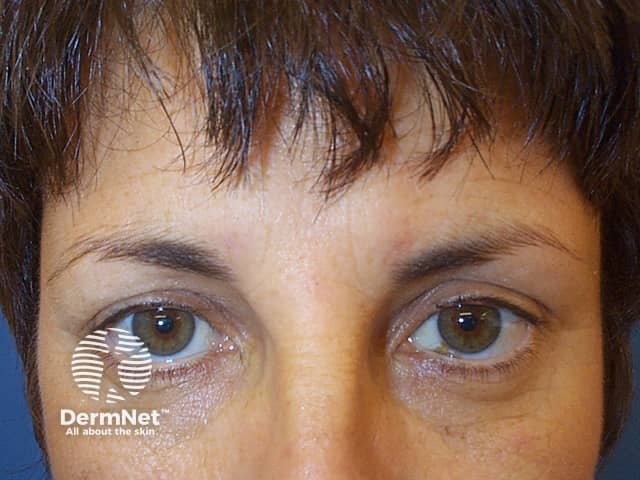
Subject relaxed after botulinum toxin injections
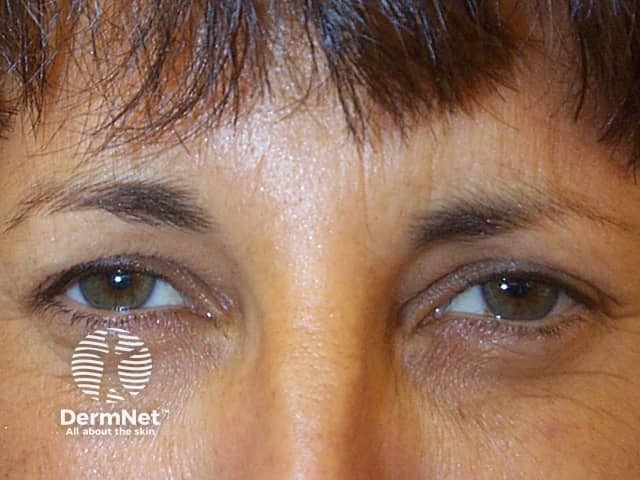
Subject attempting to frown after botulinum toxin injections
Horizontal lines branching out from the outer corners of the eyes result from contraction of the orbicularis oculi muscle. This is the facial muscle involved in the facial expression when smiling, and the resulting lines are named after their resemblance to crow’s feet.
Botulinum-A is used off-label to treat dynamic rhytides elsewhere on the face.

Before injection
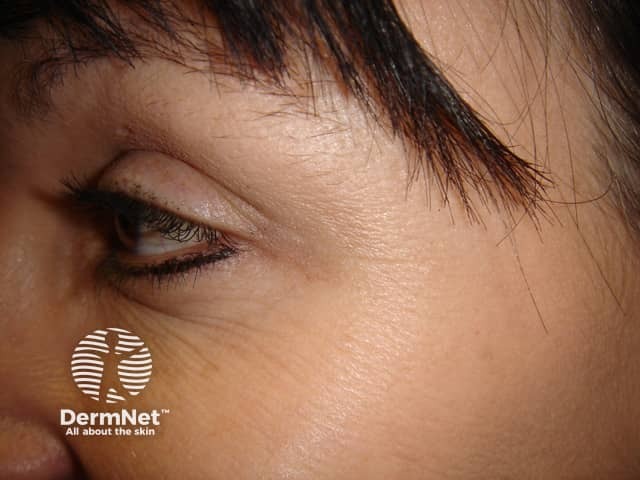
After injection
The other major use of botulinum-A in dermatology is for treatment of localised hyperhidrosis. Hyperhidrosis is a condition of excess and uncontrollable sweating. Botulinum-A injected into the skin of the axillae and palms targets the eccrine sweat glands to prevent sweating. It is used off-label to treat the auriculotemporal syndrome.
Botulinum-A is also approved for the following uses:
Each person’s facial musculature is unique; therefore, the approach to botulinum-A injection should be individualised. Prior to any treatment, it is important to assess for any pre-existing asymmetries or scars, for any evidence of concurrent infection, and for previous cosmetic surgeries — especially to the eyelids.
Botulinum-A is stored in vials, which must be reconstituted by mixing with sterile saline water. The mixture should be used within 24 hours in order to ensure that it does not become contaminated.
A fine needle (30 gauge) is recommended. For the treatment of dynamic rhytides, small (0.1 mL) injections are made precisely into the muscle responsible for the facial lines. Generally, injections in up to five different sites can be expected when receiving treatment for the upper face. A local anaesthetic is not usually required. The exception is for treatment of hyperhidrosis of the hands and feet, where injection into the thicker skin can cause a significant amount of discomfort.
In rare instances, the body’s immune system might respond to botulinum-A injections by producing antibodies that attempt to neutralise the effects of the toxin. The main risk factor for developing antibodies is the frequency of injections. Thus, injections generally should not be given more frequently than once every eight to twelve weeks.
Botulinum-A is contraindicated in individuals with:
Botulinum-A should also be avoided during pregnancy and while breastfeeding.
Certain medications that enhance the effects botulinum-A should be avoided. These medications include tetracycline antibiotics and aminoglycoside antibiotics.
Blood thinners — including aspirin, warfarin and dabigatran — increase the risk of significant bruising from injection sites.
The most common adverse effects of botulinum-A are related to the injection, rather than to the botulinum toxin itself. These adverse effects include pain, bruising, swelling, and redness at the injection site.

BOTOX® injections
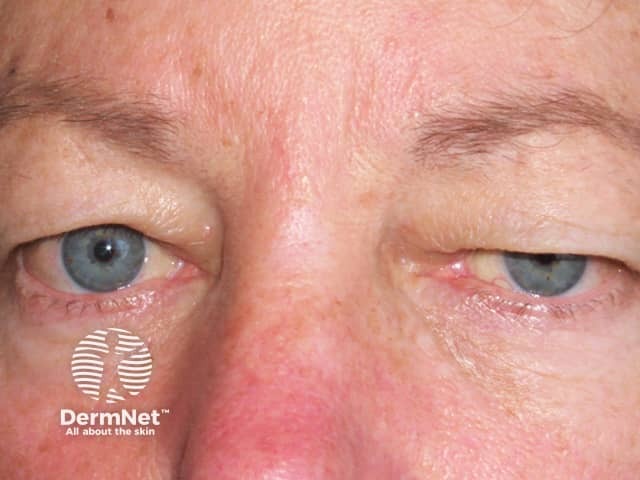
BOTOX® injections
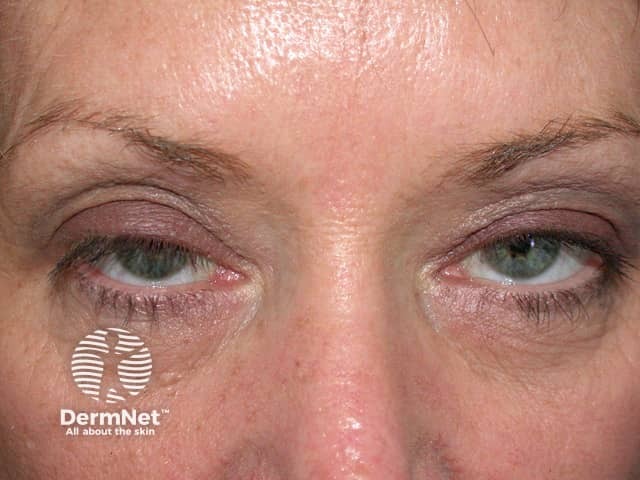
BOTOX® injections
New uses for botulinum-A in dermatology are being investigated.
Botulinum-A injected to paralyse the muscles underlying a healing wound can reduce wound tension in keloids and hypertrophic scars, which is a major determinant of cosmetic outcome. Botulinum-A can also block nerve signals to help modulate the pain, redness, and itchiness associated with keloid scars.
Mixed results have been obtained in studies for using botulinum-A to reduce facial flushing associated with menopause and rosacea.
Botulinum-A can reduce sebum production in the facial region, due to its effects on the arrector pili muscles.
Postherpetic neuralgia is a common complication of herpes zoster is ongoing pain after the resolution of the rash. Botulinum-A has been shown to significantly reduce this residual pain by modulating nerve signals.
Botulinum-A injections into the neurovascular bundles on the hands have been reported to reduce pain in Raynaud phenomenon, which is associated with excessive blood vessel constriction when exposed to cold.
Botulinum-A has also shown promise in improving outcomes for dermatological conditions affecting skin folds, likely through modifying the moist environment to reduce maceration and infection. These conditions include hidradenitis suppurativa, benign familial pemphigus, and flexural psoriasis.